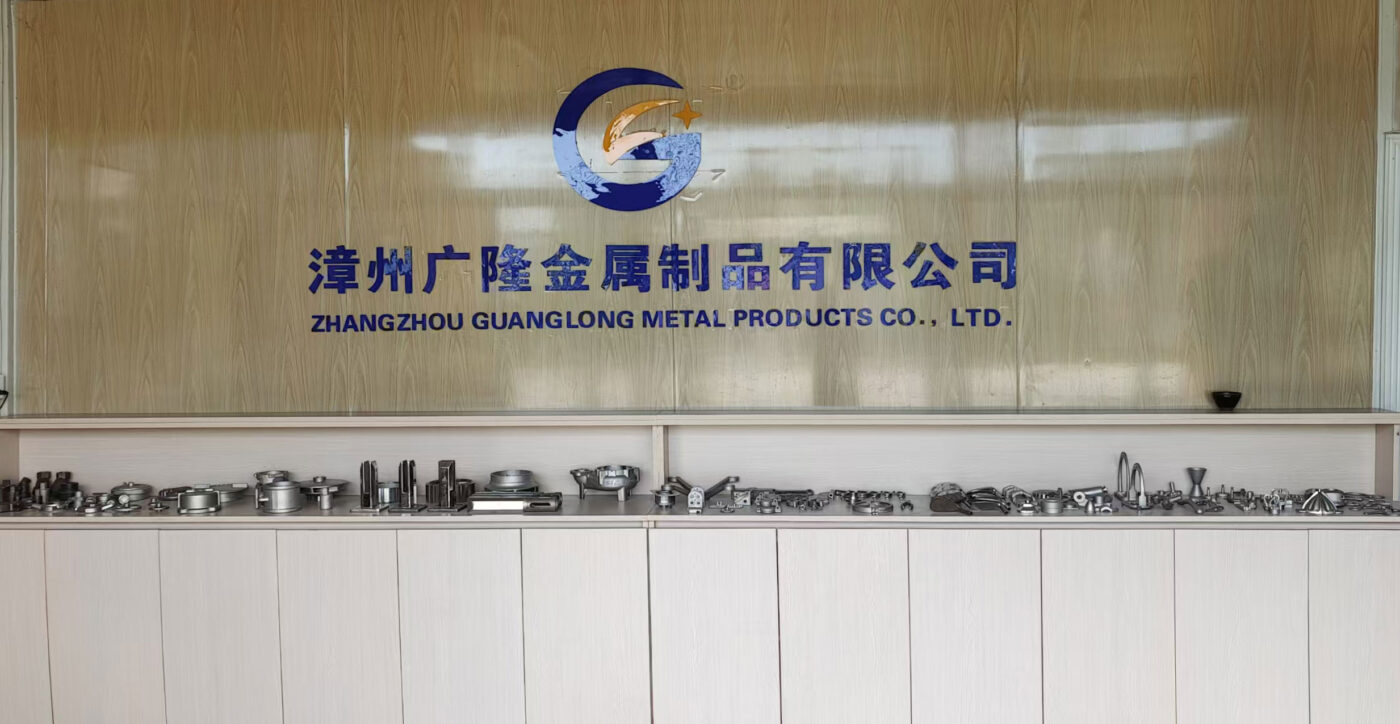INVESTMENT CASTING TOLERANCES
Investment casting, also known as precision casting or lost wax casting, is a manufacturing process used to create intricate and complex metal parts. Tolerances in investment casting refer to the acceptable variations or deviations from the specified dimensions or features of a cast part. Achieving tight tolerances is crucial in ensuring that the final product meets design requirements and performs as intended. The tolerance levels in investment casting depend on various factors, including the material used, part geometry, and the capabilities of the foundry. Here are some general considerations regarding investment casting tolerances:
1,Part Complexity: Parts with intricate features, thin walls, or complex geometries may have looser tolerances compared to simpler designs. Achieving tight tolerances becomes more challenging with increasing complexity.
2,Material Selection: The type of metal or alloy used in the casting process can influence achievable tolerances. Some materials may exhibit greater shrinkage during cooling, affecting the final dimensions of the cast part.
3,Size of the Part: Larger parts may have looser tolerances compared to smaller parts. Controlling dimensions becomes more challenging with increasing size.
4,Casting Method: Different investment casting methods may have varying tolerances. For example, the traditional lost wax process may have different tolerances compared to newer technologies or variations of the process.
5,Quality Control Measures: The implementation of stringent quality control measures and inspection processes can help ensure that the final cast parts meet the specified tolerances. This may include the use of advanced measuring tools and techniques.
6,Experience of the Foundry: The expertise and experience of the foundry in investment casting play a significant role in achieving tight tolerances. Established foundries with a history of precision casting are often better equipped to meet strict tolerance requirements.
7,Customer Requirements: Tolerance specifications are typically outlined in the customer’s design requirements or drawings. It’s essential for the foundry and the customer to communicate clearly about the acceptable tolerance levels for a given project.
8,Surface Finish: Tolerances may be influenced by the desired surface finish of the cast part. Parts requiring a high degree of surface smoothness or intricate details may have different tolerance considerations.
It’s important for designers and engineers to work closely with the foundry during the design phase to understand the limitations and capabilities of the investment casting process, ensuring that the specified tolerances are achievable. Additionally, communication between the customer and the foundry is crucial to establish clear expectations regarding tolerances and quality standards.
General Tolerances for Investment Casting:
-
Linear Dimensions:
- Small parts (up to 25mm / 1 inch): ± 0.075 mm to ± 0.1 mm (± 0.003 to ± 0.004 inch).
- Medium parts (25-100mm / 1-4 inches): ± 0.1 mm to ± 0.25 mm (± 0.004 to ± 0.010 inch).
- Larger parts (> 100mm / 4 inches): ± 0.25 mm to ± 0.75 mm (± 0.010 to ± 0.030 inch).
-
Flatness: Typically, 0.05 mm per 25 mm of length (0.002 inches per inch) can be expected.
-
Surface Finish: Investment casting often provides a fine surface finish of around 63-125 Ra µin (1.6 to 3.2 Ra µm), although further machining may be needed for finer finishes.
-
Wall Thickness:
- Minimum wall thicknesses can vary but are typically around 1.5 mm (0.060 inches) depending on the material and design.
-
Geometrical Tolerances:
- For features such as concentricity or perpendicularity, tolerances are often within ±0.2 mm to ±0.5 mm (0.008 to 0.020 inch), though tighter tolerances can be achieved with secondary machining.
Investment casting is known for producing parts with close tolerances, making it suitable for applications requiring precision, such as aerospace, medical, and automotive components.
2. Tolerances
INVESTMENT CASTING TOLERANCES |
|||
| Inches | Millimeters | ||
| Dimension | Tolerance | Dimension | Tolerance |
| Up to 0.500 | ±.004″ | Up to 12.0 | ± 0.10mm |
| 0.500 to 1.000” | ±.006″ | 12.0 to 25.0 | ± 0.15mm |
| 1.000 to 1.500” | ±.008″ | 25.0 to 37.0 | ± 0.20mm |
| 1.500 to 2.000” | ±.010″ | 37.0 to 50.0 | ± 0.25mm |
| 2.000 to 2.500” | ±.012″ | 50.0 to 62.0 | ± 0.30mm |
| 2.500 to 3.500” | ±.014″ | 62.0 to 87.0 | ± 0.35mm |
| 3.500 to 5.000” | ±.017″ | 87.0 to 125.0 | ± 0.40mm |
| 5.000 to 7.500” | ±.020″ | 125.0 to190.0 | ± 0.50mm |
| 7.500 to 10.000” | ±.022″ | 190.0 to 250.0 | ± 0.57mm |
| 10.000 to 12.500” | ±.025″ | 250.0 to 312.0 | ± 0.60mm |
| 12.500 to 15.000 | ±.028″ | 312.0 to 375.0 | ± 0.70mm |
| Ferritic Stainless Steels | ||||
| Alloy | Tensile Strength | Maximum Use Temp | Melting Point | Resistance |
| 405 | 585 MPa (85Ksi) |
815˚C (1,499˚F) |
1,480 – 1,530˚C (2,700 – 2,790˚F) |
Good acid corrosion resistance |
| 408 | 505 MPa (73 Ksi) |
815˚C (1,499˚F) |
1,400 – 1,455˚C (2,550 – 2,650˚F) |
Resists well against most oxidizing acids and salt spray |
| 409 | 448MPa (65 Ksi) |
815˚C (1,499˚F) |
1,425 – 1,510˚C (2,597 – 2,750 F) |
Good corrosion resistance |
| 420 | 760 – 1702 MPa (110 – 247 Ksi) |
427˚C (800˚F) |
1,455 – 1,510˚C (2,651 – 2,750 F) |
Fairly corrosion resistant |
| 430 | 450 MPa (65 ksi) |
815˚C (1,499˚F) |
1,425 – 1,510˚C (2,597 – 2750˚F) |
Good nitric acid resistance |
| 434 | 540 MPa (78 ksi) |
815˚C (1,499˚F) |
1,426 – 1,510˚C (2,600 – 2750˚F) |
Superior pitting resistance |
| 436 | 459 MPa (67 Ksi) |
815˚C (1,499˚F) |
1,425 – 1,510˚C (2,600 – 2,750˚F) |
Excellent citric and nitric acid corrosion resistance |
| 442 | 515-550 MPa (77 – 80Ksi) |
925-980˚C (1,700/1,800˚F) |
1,065 – 1,120˚C (1,950 – 1,120˚F) |
Good corrosion resistance |
| 444 | 415 MPa ( 60 Ksi) |
950˚C (1,752˚F) |
1,405 – 1,495˚C (2,561 – 2,723˚F) |
Good oxidation resistance |
| Martensit Stainless Steels | ||||
| Alloy | Tensile Strength | Maximum Use Temp | Melting Point | Resistance |
| 410 | 500 -1400 MPa (73 – 203 Ksi) |
650˚C (1,202˚F) |
1,482 – 1,532˚C (2,700 – 2,790˚F) |
Good corrosion resistance to air, water, and some chemicals |
| 410S | 444 MPa (64 Ksi) |
705˚C (1,300˚F) |
1,482 – 1,532˚C (2,700 – 2,790˚F) |
Good oxidation resistance |
| 416 | 517 MPa (75 Ksi) |
760˚C (1,400˚F) |
1,480 – 1,530˚C (2,696 – 2,786˚F) |
Poor Chloride resistance. Good resistance to acids, alkalis & fresh water |
| 420 | 1,586 MPa (230 ksi) |
650˚C (1,202˚F) |
1,454 – 1,510˚C (2,649 – 2,750˚F) |
Resistant to mild acids, alkalis, and water when hardened |
| 440 | 758 MPa (110 Ksi) |
760˚C (1,400˚F) |
1,483˚C ( 2,700˚F) |
Limited corrosion resistance |
| Duplex (Ferritic-Austenitic) Stainless Steels | ||||
| Alloy | Tensile Strength | Maximum Use Temp | Melting Point | Resistance |
| 2205 | 620 MPa (90 Ksi) |
300˚C (572˚F) |
1,385 – 1,443˚C (2,525 – 2,630˚F) |
Excellent corrosion resistance |
| 2304 | >600 MPa (>87 Ksi) |
570˚C (1058˚F) |
900 – 1,150˚C (1,650 – 2,100˚F) |
Resistance to corrosion cracking |
| 2507 | 800 MPa (116 Ksi) |
300˚C (572˚F) |
1,350˚C (2,460˚F) |
Excellent chloride corrosion resistance |
| Precipitation Hardening (PH) Stainless Steels | ||||
| Alloy | Tensile Strength | Maximum Use Temp | Melting Point | Resistance |
| 17-4 | 1103 MPa (160 Ksi) |
316˚C (600˚F) |
1,404 – 1,440˚C (2,560 – 2,625˚F) |
Excellent corrosion resistance |
| 15-5 | 1380 MPa (200 Ksi) |
316˚C (600˚F) |
1,404 – 1,440˚C (2,560 – 2,625˚F) |
Excellent corrosion resistance |
3. Carbon Steel
| ASTM A216 Cast Carbon Steel | ||||
| Alloy | Tensile Strength | Maximum Use Temp | Melting Point | Resistance |
| WCA | 500 MPa (73 Ksi) |
400˚C (700˚F) |
1410 – 1,460˚C (2,580 – 2,650˚F) |
Excellent corrosion resistance |
| WCB | 570 MPa (83 Ksi) |
426˚C (800˚F) |
1410 – 1,460˚C (2,580 – 2,650˚F) |
Excellent corrosion resistance |
| WCC | 655 MPa (95 Ksi) |
538˚C (1000˚F) |
1410 – 1,460˚C (2,580 – 2,650˚F) |
Excellent corrosion resistance |
| SAE-AISI 1020 steel | ||||
| Alloy | Tensile Strength | Maximum Use Temp | Melting Point | Resistance |
| 1020 | 460 MPa (63 Ksi) |
400˚C (700˚F) |
1420 – 1,460˚C (2,590 – 2,650˚F) |
Excellent corrosion resistance |
| 1020 | 430 MPa (62 Ksi) |
400˚C (700˚F) |
1420 – 1,460˚C (2,590 – 2,650˚F) |
Excellent corrosion resistance |

